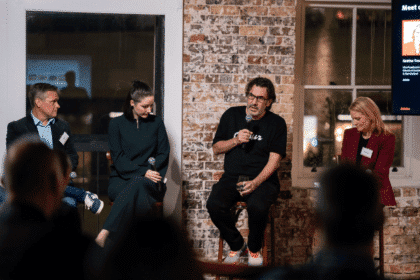In this guest post, Yoghurt Digital Senior SEO & Content Strategist Jia Yoong Lee reveals the dos and don’ts of elevating your content marketing.
When Spotify urged people to take a page from the 3,445 people who streamed the ‘Boozy Brunch’ playlist on a Wednesday, hearts and minds were won all over the world.
Why?
Because Spotify was providing an amusing insight into our quirky habits based on clever use of customer data. Data, when used the right way, is incredibly compelling (as are boozy brunches, of course).
According to WordPress, 70 million new posts are published each month. At a time when content marketing is reaching peak saturation, leveraging data to tell a story – otherwise known as data journalism – is a great way to offer engaging, valuable and unique content to your customers across a number of touchpoints.
What is data journalism?
Data journalism is a discipline that combines a range of skills – from data mining and analysis, to graphic design, coding, and writing – to uncover insights that can be used to shape a compelling story. It’s been a common practice in the world of journalism for some time.
The Guardian Datablog is a great example, where many important stories like the crowdsourcing of 450,000 MP expenses records in the UK, and the coverage of the Afghanistan and Iraq war logs, have been produced through the analysis and narration of data.
Why do we need data journalism in content marketing?
People have always loved a good story. We’ve been telling them since the beginning of time. And data journalism is one of the best tools available for marketers to tell an engaging, unique story that stands out from the saturated content crowd.
When an organisation collects data – from customer purchase habits recorded in the CRM, to research findings for a new product trial – that data can be used to uncover unique insights, twists, or observations. Those insights that then can be turned into a valuable story or piece of thought leadership that your brand can own and share. Today, content marketers are leveraging data journalism to talk about:
- User-centric research findings
- Unique characteristics or interests of customers
- Relevant growth trends
- Industry thought leadership
- Exploring a surprising outlier or anomaly
These can be communicated through anything from social media posts and ecommerce blogging to data visualisation maps, infographics and videos. When executed effectively, data-driven content can dramatically increase customer engagement, brand awareness and loyalty for companies big and small, B2C and B2B.
The 5 dos and 5 don’ts on breaking into data journalism
So, how can you best use data journalism in your content marketing strategy? For anyone that’s unfamiliar with data analytics, data journalism can seem like an intimidating feat. But at Yoghurt Digital, data is our bread and butter. Here are the top 5 do’s and don’ts of data journalism for content marketing:
- Don’t forget the human side
To start off, you’ll likely need to source and organise your data in order to determine your story. If you already have an idea of what your story might be, this can help you narrow your data mining down faster. You can use existing company insights, or scout the web for the latest trends. Some good places to look are Amazon Public Data Sets and Google Trends.
Once you have your data, it’s vital that you avoid the trap of forgetting the human side of your project. Don’t get so caught up in the numbers that you forget about your customer. Always create content with the end user in mind – make it relevant, meaningful and engaging.
- Do establish trust
Bringing customers into your content strategy by including user-generated data such as tweets, comments or reviews will help your audience feel more invested in your content. Customers relate much better to stories based on human insight and emotion, so ensure your content leverages data to achieve this.
Providing interesting, relevant insights in a user-friendly format is an excellent way of building a sense of legitimacy and trust within an audience, and can even lend your brand some extra personality.
Just be careful about using data in a way that’s inaccurate or misleading. Remember that age-old saying: “It’s funny because it’s true”. There’s something about the truth that surprises, amuses and disarms us all – and real, meaningful data is about as truthful as you can get.
- Don’t make it complicated
It can be easy to get excited by all the insights you’ve uncovered and want to cram everything into one content piece – but you need to calm down. Every good story has a clear and concise structure, whether it’s chronological, process-based, or a traditional narrative.
Data journalism isn’t about just blurting out a bunch of numbers and leaving your audience to figure it out. It’s about telling a story using numbers, facts and insights to make it an engaging and persuasive experience.
- Do have a clear angle
Channel your inner journalist and ask: What’s the angle? Aim to make your story as original, compelling and punchy as possible. Be careful not to crowd your story with too many bits and pieces.
Your storyline doesn’t have to be extraordinary or completely new. It can even be a subject everyone’s discussing. Take the time to reflect on why you want to tell this story, what it means to your customers and use your unique brand voice and perspective to give a fresh take on the subject.
Another way to keep your story user-friendly is through different kinds of content formats, like infographics, animated videos, or data visualisation. The incredible Marvel Cinematic Universe by the Straits Times in Singapore is a great example of data visualisation taking a large, complex dataset and translating it into a fun, easy-to-navigate experience for audiences.
- Don’t just publish and wait – promote, promote, promote
After all your hard work, don’t simply hit the publish button and wonder why every news agency hasn’t picked up the story. Remember to shout about your work both before and after it’s gone live. Reach out to journalists covering your industry, email your customers and share it on your social channels. You can even offer special sneak peeks of your findings to tease people’s curiosity. Having a strong SEO strategy from the beginning of your process will also ensure any content you create will be easily discoverable.








